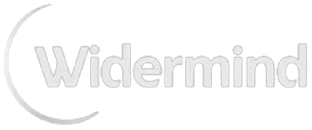Course description
LTE is the natural upgrade path for carriers with GSM/UMTS or CDMA2000 networks. The different LTE frequencies and bands used in different countries imply that multi-band phones will be able to use LTE in all countries where it is supported. The course “LTE Radio Interface” analyzes the E-UTRA (LTE) in detail.One of the most important parts of the LTE is the E-UTRAN protocol Architecture which is carefully described. Furthermore the Layer 1 information Processing is analyzed.The new modulation schemes and methods are discussed by studying OFDM and MIMO in E-UTRA. How the Synchronization & Network Access is handled is discussed as well as the Downlink and Uplink Transmission Procedures.LTE Advanced features are included as well, such as Carrier Aggregation, Self Optimized Networks (SON), Coordinated Multi Point (COMP) Heterogenous Network, enhanced Inter Cell Interference Coordination eICIC and Enhanced MIMO Support.
Target audience
Target audience is radio engineers and project managers as well as network architects.
3 days
2.400 €
WM0064
Content
ORGANIZATIONS AND STANDARDIZATIONS
- 3GPP, IETF and Internet standardization bodies
- Arena Towards Next Generation
LTE INTRODUCTION
- Terminology
- Evolution of Mobile Systems and 3GPP Releases
- GSM / GPRS
- The split Architecture
- UMTS and LTE Network Elements
- Data rate versus Mobility
- Encapsulation & Tunneling
- Traffic Case: Network Attach
- Protocol Stacks
- EPS Mobility Management (EMM) states
- LTE Mobility management – Tracking Areas
- Dual registration and ISR
- Mobility in Connected mode
- Tracking Area List
- Mapping coverage
E-UTRA OVERVIEW
- WM-Map_01: E-UTRA Overview
- E-UTRA Terminal Categories
- GUTI & S-TMSI
- Areas and Identities
- WM-Map_02: Mobility in Idle mode
E-UTRA PROTOCOL ARCHITECTURE
- Simplified Bearer Establishment
- WM-Map_03: E-UTRA Channel Architecture
- RRC procedures, System Information, UE States
- RRC Connection Reconfiguration
- Overview of E-UTRA Layer 2
- Layer 2: Packet Data Convergence Protocol and Radio Link Control
- E-UTRA Protocol Architecture A
- Hybrid ARQ and Medium Access Control
- From IP Packet to TB
LAYER 1 INFORMATION PROCESSING
- Fixed Reference Channel
- WM-Map_05: DL-SCH Scrambling & Modulation
- Channel coding, Turbo Coding and Rate Matching
- Scrambling and Modulation
- OFDM and MIMO in E-UTRA
- From IP Packet to Radio Wave
- OFDM and Multi carrier Transmission
- Subcarrier Orthogonality
- Modulation: Higher-Order, technique comparison
- Scheduling, Link Adaptation
- WM-Map_06: OFDM Signal Generation
- Multi-path Propagation, Cyclic Prefix
- WM-Map_07: OFDM Signal Generation (IFFT)
- MIMO, Multi-antenna Configuration
- WM-Map_08: MIMO, Spatial Diversity (STBC)
- E-UTRA Transmission Modes and Radio Frame (FDD)
- Downlink and Uplink Sub-frames
SYNCHRONIZATION & NETWORK ACCESS
- E-UTRAN Transmission
- WM-Map_09: Cell Search and SI Acquisition
- PBCH Coding and Mapping
- Random Access, RA signal flow
- PRACH Configuration index
- RA Preamble Formats, Generation and Mapping
DOWNLINK TRANSMISSION PROCEDURE
- WM-Map_10: Downlink Sub-frames
- PHFICH and PDCCH Coding and Mapping
- Downlink Control Information (DCI)
- Transmission Mode and DCI Format
- PDCCH Format and Search Spaces
- WM-Map_11: DL Transmission Scheduling & HARQ
- Resource Allocation Types
- Modulation and Coding Scheme
- Transport Block Size Index
- Semi-Persistent Scheduling, Configuration
- Discontinuous Reception
- Channel Status Reporting
UPLINK TRANSMISSION PROCEDURE
- WM-Map_12:Uplink Transmission Scheduling & HARQ operation
- PHICH and PUCCH Coding and Mapping
- UCI Multiplexed on PUSCH
